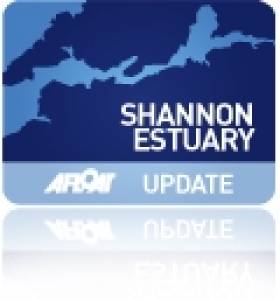Displaying items by tag: Shanon Estuary
SFPC Welcomes 'Game-Changing' New Foynes Port-Limerick Road Scheme
#FoynesPort – Shannon Foynes Port Company CEO Pat Keating has described the procurement of engineering consultancy services for the Foynes to Limerick Road Improvement Scheme as a hugely significant moment in realising the enormous investment and employment potential of the estuary.
The scheme will provide a high quality road to connect the Port of Foynes with the M7/N18 at Limerick. The N69 National Secondary Road currently connects Foynes to Limerick along 32km of single carriageway.
Welcoming the announcement by Limerick City and County Council, Mr Keating said that the development of the high-quality road between Foynes and Limerick would be a 'game-changing' moment for the port company.
"This commitment is one of the most important developments in the history of Shannon Foynes Port Company. Its benefits will be felt not just by the Port Company but by the wider region as this road is a central piece to facilitate our plans for very significant economic growth along the Shannon Estuary.
"We are planning to double tonnage at our ports and anticipate significant job creation on the estuary over the next 30 years. We have signaled that two key pieces of infrastructure are critical for this to happen.
One is the regeneration of the rail link to Foynes, which we are actively seeking to advance, and the other is the development of a quality road link to Limerick.
"The road link is an absolutely essential piece for us. We have a huge opportunity to attract investment and industry over the coming decades thanks to the advantage that the estuary's unique deep-water gives us. But we will not be able to deliver on these plans unless there is a quality transport network.
"Heavy goods traffic alone could increase by as much as 350% over the life time of our Vision 2041 Masterplan. The N69 is inadequate as things stand, let alone with a tripling of heavy goods traffic. The development of this high quality road to connect Foynes with Limerick is, therefore, essential. Otherwise growth will be seriously constrained and opportunities will be lost."
Mr Keating said that the announcement is a definite show of commitment to the project by the Department of Transport, the NRA, the Mid West National Roads Design Office and the local authority.
"We cited the importance of this road link when we launched Vision 2041 and to have such a prompt commitment is very encouraging. We look forward now to the selection of a preferred route in 2014, followed by the public consultation process and then on to the actual delivery of the new road."





























































